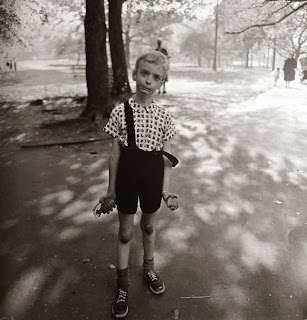After looking at Philip Lorcia diCorcia’s work, I have came to the conclusion that I have to better place my subjects in a more fitting environment if I want to stage my photographs. I haven’t thought of myself as a director, but I am going to have to develop and incorporate the mindset of a director to my photography to capture the psychological aspect of what goes on beneath the surface of a human. I know whether or not my photographs are captured at the right time, but capturing the right place is my current side project as well as well as being able to better portray the psychological aspect.

During my photo critique on Thursday, I was told to research a few photographers, one of them being Malerie Marder. In one of Malerie’s Exhibitions, Blain Southern, she says, “I used to have anxiety about my pictures exposing things too private, but the real intimacies are censored out. I still get pangs of self-consciousness, but it’s too late for regret. What was I thinking when I made the pictures? This is in no particular order: fate, kink, performance, a secret, nostalgia, sensual memory, voyeurism, nighttime settings, barren rooms, stark lighting, romantic trysts, foreign environments, intimacy, lack of intimacy, connection, lack of connection, self-reflection, lack of self-reflection, awkwardness, isolation, random, purpose, shadow, vulnerability, immaturity, innocence, amorous bodies, ambiguity, cocoons of emotion, modernist architecture, transience, lurid smells, a patient’s sickbed, love, eroticism, clarity, blushing, bruised, family, boyfriends, conflict, loyalty, disapproval, neuroticism, narcissism, truculence, numbness, sexual discomfort, subconscious, and the past. None of it is relevant now.”

I will say that as a photographer, I know exactly what my problems and struggles are. It’s not that I am unaware of my weaknesses, it’s more of a problem of overcoming them. Since I want to stage photographs that are about what people are going through and what they are struggling with, I like to work with people I am close with, and try to depict what they’re going through in life, by photographing. It’s difficult for me because I don’t want to offend them by showing too much or falsely showing something. I am so scared of this and Malerie Marder makes a good point that this fear is irrelevant. I just need to keep telling myself that getting the photograph I want and need is very important and the people that are closest to me and the people who are willing to work with me shouldn’t be offended or get upset.I also would like to find more models that aren’t embarrassed to be put on the spot other than three of my exotic friends.
Looking at Philip Lorcia diCorcia’s work, I became aware of the fact that I need to better locate my subjects, but Malerie Marder has opened my eyes to photographing in motels as a more specific setting. She often goes to pay by the hour motels for some of her shots, which is something I’ve never thought about and am definitely interested in once I get a little more money. Motels are we people go when they are kicked out of the house, traveling, visiting, need to get away, and other temporary reasons. Looking at her work, I thought more about motel rooms, and motels freak me out a bit. They are very erie, I mean, think about how many people have slept in that bed before you? Yes they change the sheets, but think about all of the things that have gone on in that room that you won't even know about? It's the exact same concept of what I am trying to capture in people. It's the idea of not knowing what goes on beneath the surface and figuring it out and breaking it down. I want that erie feeling a photograph can give off. Dramatic, suspenseful, and slightly unanswered is exactly what I want. A college dorm has the same concept I guess, but It’s hard to photograph in a dorm at school because it just isn’t convincing. I guess I just want to find a high light setting, that's homier than a college dorm, but has an erie feel to it while working with models who aren't afraid to express themselves.














